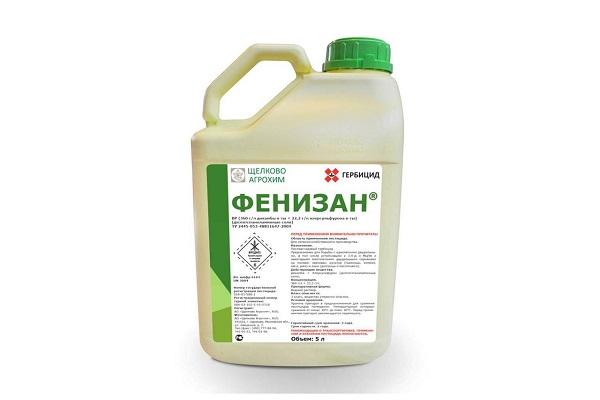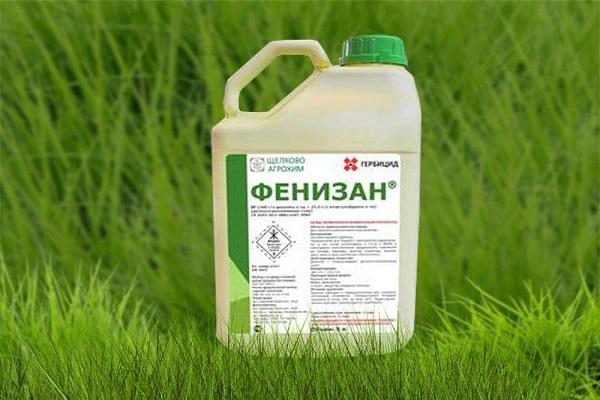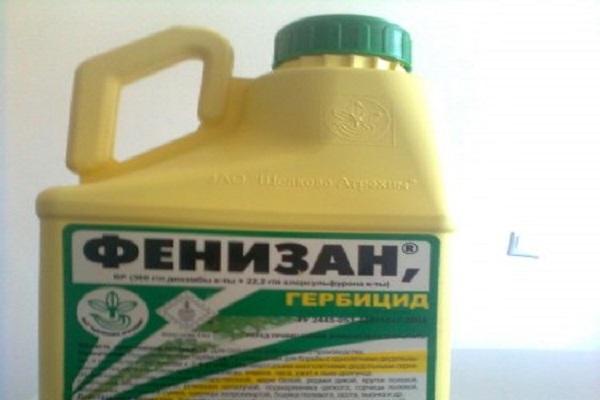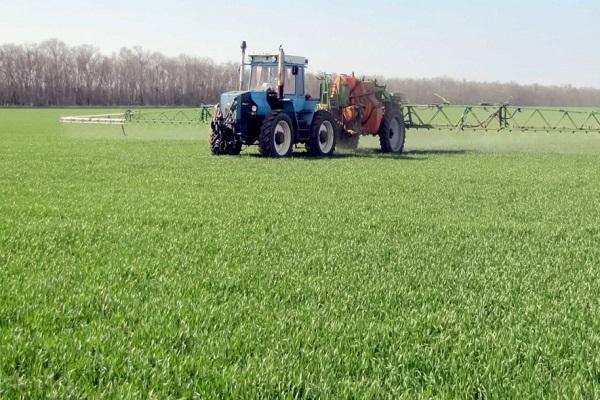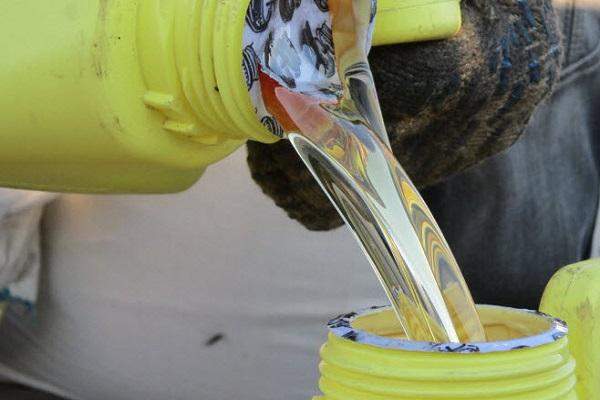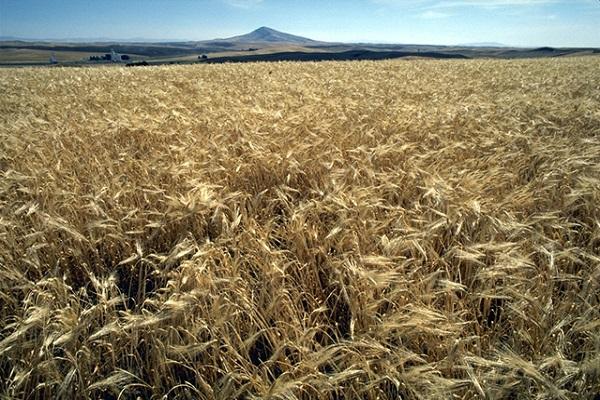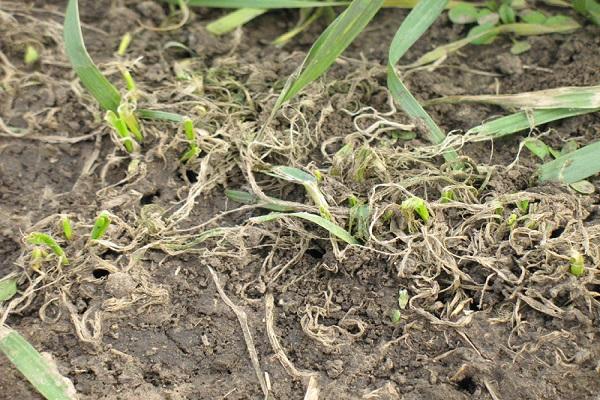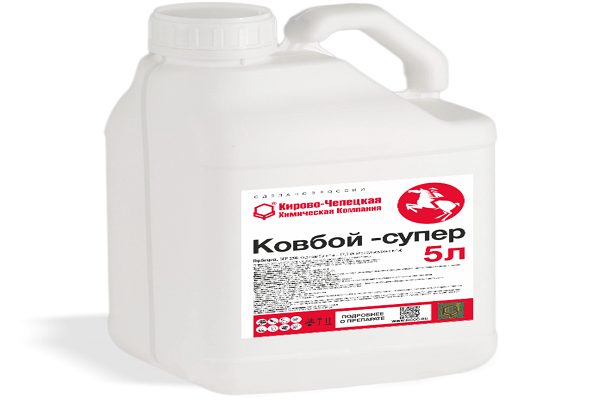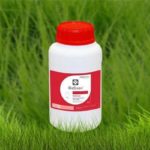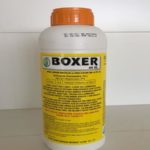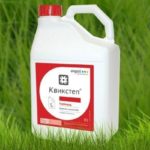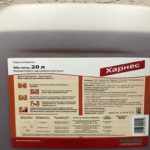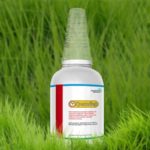Herbicides with two active components demonstrate increased efficiency and destroy different types of weeds. Strong preparations with ingredients from different groups quickly clear fields without harming the protected crops. Let's look at the instructions for using the herbicide Fenizan, which has a two-component composition and a wide range of activity against weeds.
general information
The drug belongs to the group of post-emergence herbicides; spraying is carried out when the weeds have already emerged from the soil and are at an early stage of growth. Phenizan is used against the following types of weeds:
- annual dicotyledons, including those resistant to 2,4-D and MCPA;
- dicotyledonous perennials - certain species.
Degree of impact on different types of weeds:
| Strong | Average | Weak |
| Pikulnik, pigweed, dandelion, knotweed, acornweed - species | Veronica, sow thistle – species | Foxtail |
| Spring ragwort | Sagebrush | Ezhovnik |
| Ambrosia artemifolia | Forget-me-not, violet, bindweed (field) | Common bluegrass |
| Thistle | cocklebur | Bristlecone - species |
| Nightshade black | ||
| Field mustard | ||
| Wild radish | ||
| Cornflower blue | ||
| Yasnotki |
Phenizan is used to treat spring and winter grain crops and fiber flax.
The two-component preparation contains:
- dicamba - 360 grams per liter;
- chlorsulfuron – 22.2 grams per liter.
Phenizan – aqueous solution. Packaged in 5 liter canisters.
Mechanism of action
The herbicide has a dual effect on weeds. Dicamba causes pathological elongation of cells of sensitive weeds, stretching of the stem tips. Chlorsulfuron inhibits the synthesis of amino acids, stopping the growth and development of weeds.
Selective action does not affect protected crops. Cereals are not sensitive to the herbicide complex included in Fenizan.
Penetration of Fenizan into weeds occurs within 4 hours. Growth suppression occurs immediately. Within 2 weeks, the weed shoots lengthen and become discolored, then dry out and die.
The protective period lasts from a month to 60 days, which takes up the entire growing season.
Positive and negative sides
Phenizan is chosen for treating crops due to a number of advantages of the herbicide:
- rapid decomposition in the soil, due to this, any crops can be sown in the fields in the future - crop rotation is not disrupted;
- effect on weeds of different groups;
- the complex action of the two components ensures enhanced herbicidal properties (synergy);
- independence from weather and climatic conditions - suitable for any region;
- used for winter crops in autumn;
- One application per season is enough.
The herbicide can be sprayed by ground methods and using agricultural aircraft. Treatment of crops is effective during the initial stage of weed growth. If treatment is delayed, the effectiveness of Fenizan is reduced.
Consumption rate
The drug is administered according to the following regulations:
| Culture | Phenizan in liters per hectare | Working mixture in liters per hectare | |
| Ground application | aviation | ||
| Spring and winter wheat and barley, oats,
rye, oilseed flax; fiber flax |
0.14-0.2 | 200-300 | 25-50 |
If the crops are heavily infested, the upper application rates of Fenizan are selected.
How to properly prepare a working solution
When preparing a solution for spraying, it is important to observe the following rules:
- the mixture is prepared on special platforms (concreted) to prevent the absorption of the herbicide when spilled into the ground;
- when filling aircraft tanks (An-2), the engines are turned off, filters are used to clean the mixture;
- When filling the tanks of helicopters (Mi-2), the propellers operate at low speeds.
The sites must be isolated and fenced, and they are disinfected after filling the tanks.
Preparation of working solution
The solution is prepared immediately in the tank. Fill the container halfway with water and add Phenizan. Rinse the canister twice with water and pour it into the tank. Then add the remaining liquid and mix the solution thoroughly.
Instructions for use
To ensure maximum effect of the herbicide, work in accordance with the instructions:
- Cereals are pollinated at the initial stage of tillering (3-4 leaves), when the weeds are in the seedling stage. In exceptional cases, it is allowed to spray grain crops in the spring, when they emerge into the tube, if it was not possible to treat them earlier.
- At late dates, seed and selection crops are not treated.
- Flax is sprayed at the herringbone stage.
- The best time is morning, evening, cloudy weather, temperature - 8-25 °.
- Crops are not treated before and after rain (interval - at least 4 hours), wind - no more than 3 meters per second.
Extreme heat (above 25°) and cold (below 5°) reduce the effectiveness of the herbicide's active ingredients.
Important: repeated spraying of Fenizan is not practiced. In the absence of treatment results, they look for other weed control agents.
Precautionary measures
When working with herbicides, comply with the regulations for the use of drugs of hazard class 3:
- working in protective suits;
- for aerial spraying – no wind, for ground spraying – wind speed up to 3 meters per second;
- dilution of the solution - in accordance with the instructions for the drug;
- informing apiary owners, limiting the flight of bees (for bees - hazard class 3).
The drug does not pose a danger to water bodies and fish; its use is permitted.
Degree of toxicity
Fenizan does not affect the growth and development of grain crops and does not accumulate in the soil, so the drug is not dangerous for subsequent crops in crop rotation.
Is it compatible with other products?
The drug is allowed for use in mixtures with other herbicides, insecticides, and antifungal agents.Before spraying, the composition must be tested on a small area for toxicity.
Storage conditions
The herbicide is stored in chemical storage rooms. Permissible temperature range: -30° to +30°. In sealed factory packaging, the drug Fenizan remains active for 2 years.
Similar drugs
Almost exact analogues of the product are the drugs Cowboy Super and Propolol. They contain the same active substances in slightly different proportions. Herbicides have post-emergence activity. Cowboy Super can be used with liquid fertilizers.
Other herbicides based on the active components of Phenizan:
- dicamba – Advocate, Diastart, Dimesol, Corleone (two-component);
- chlorsulfuron – Grange, Octigen.
The drugs do not cause resistance and quickly decompose in the soil.
Chemical weeding eliminates the need for labor-intensive mechanical tillage methods. Phenizan is a reliable, safe herbicide for cereals, providing long-term and comprehensive protection.

